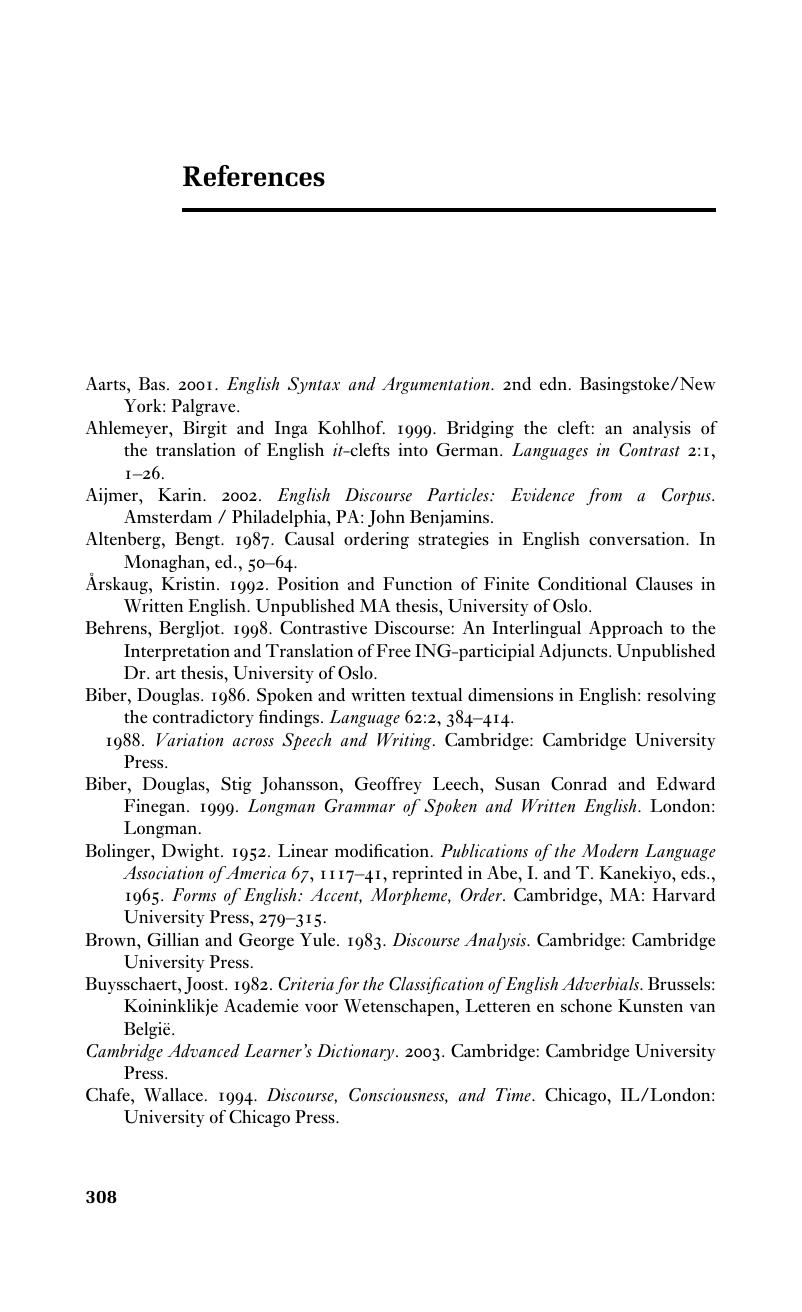Book contents
- Frontmatter
- Contents
- List of Figures
- List of Abbreviations
- Preface
- Part I A framework for analysing adverbials
- Part II Adverbial positions: theme, cohesion and information dynamics
- Part III Semantic types of adverbials: subtypes, frequencies and usage
- Part IV Adjunct adverbials in English
- Appendix
- References
- Index
- References
References
Published online by Cambridge University Press: 03 May 2010
- Frontmatter
- Contents
- List of Figures
- List of Abbreviations
- Preface
- Part I A framework for analysing adverbials
- Part II Adverbial positions: theme, cohesion and information dynamics
- Part III Semantic types of adverbials: subtypes, frequencies and usage
- Part IV Adjunct adverbials in English
- Appendix
- References
- Index
- References
Summary

- Type
- Chapter
- Information
- Adjunct Adverbials in English , pp. 308 - 314Publisher: Cambridge University PressPrint publication year: 2010



